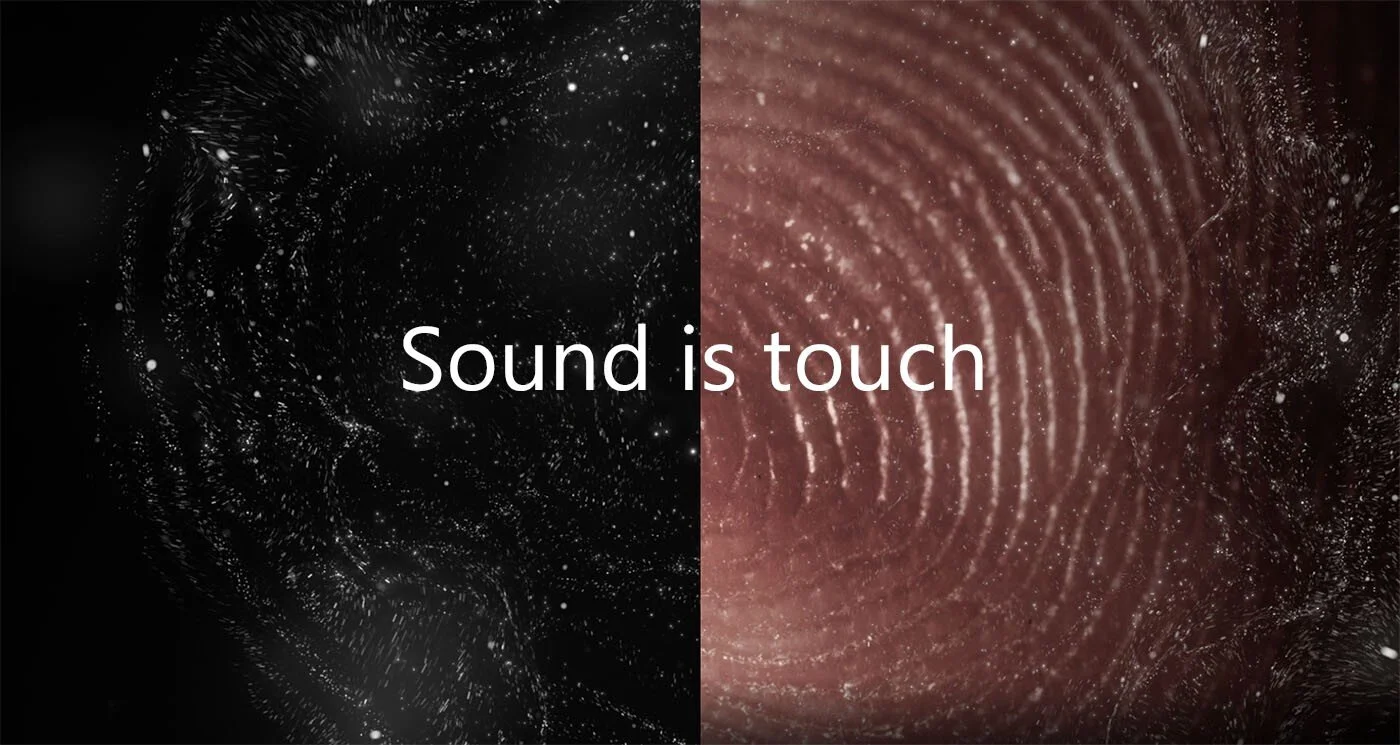Sound & Sensory Design Innovation

Sensory Design supports the visual and moves beyond it, using additional sensory channels to communicate information more intuitively and effectively.
Sensory Design integrates hardware and visual design with sound, voice, tactile, kinetic and spatial elements to orchestrate fluid product & brand experiences that resonate deeply with customers.
Sensory Design drives intuitive connections to products and brands for people of all abilities.
I develop sound & sensory design languages that make global technology products more intuitive, immersive, and inclusive.
Contrary to conventional thinking, our senses are not separate, they converge and overlap. We always experience sound as part of a multisensory web of perception.
Because we respond to sound more quickly than other senses, it plays a crucial role in orchestrating our experience. Sound shapes what we see, what we touch, and how we feel about it.
These perceptual dynamics allow us imagine new kinds of sound and sensory design languages that cut through the noise to resonate with people in deeper, more intuitive ways.
A New Paradigm
I am a composer, sound artist, sensory designer and creative leader.
As Director of Sound Design at Microsoft for 10 years, I was responsible for the sonic identity of the company’s most important products, platforms and hardware devices. I’ve conducted research into music, sound, and sensory experience around the world.
With a multidisciplinary background in music composition, production, performance, anthropology, psychology, design, research and technology, I bring a rare combination of creative, technical and leadership skills to my mission: To create a more intuitive, immersive and inclusive sensory foundation for the digital world.
“Few people on the planet have as much applied experience in sound design for global products and platforms as Matthew Bennett, who's made it his mission to transform the way people experience the soundscape of technology. ”
At Microsoft, I founded and directed the Sound & Sensory Design Program to develop a new holistic sensory-driven paradigm connecting the digital and physical worlds. My work applying principles of phenomenology, psychoacoustics, and cognitive neuroscience has changed the way sound is designed for modern digital products
The sounds and micromusic I created for Microsoft’s major platforms are recognized around the world and heard on 1.5B devices each day.
Most recently, I created the new ‘Calm’ sound design language for Windows 11—one of Microsoft’s most important releases ever—ushering in a new era of OS design and reshaping the sensory experience of modern technology and the digital world.
-Matthew Bennett
I offer my clients a new way of hearing—a deeper way of listening to their products, their customers, and the environments where they connect.
Designing Sound at Scale
Developing integrated product sounds that communicate effectively on a global scale presents a unique set of challenges.
I offer clients a new way of hearing—a more holistic way of tuning in to their products and customers—and the wide range of sensory environments in which they function. This shift in thinking has big practical results.
“Sensory Design uses sound to connect our digital, physical, and emotional worlds”
The Sensory Design Model offers a structured process to reveal the rich potential of deeper sensory layers and provides a framework and shared language to explore them with collaborators. This approach allows us to work efficiently with clients and stakeholders across multiple disciplines to create a strong sensory foundation for their digital platforms and product experiences.
I am committed to delivering tangible sound design innovation that helps drive the evolution of modern technology in 2d and 3d worlds.
The Sensory Model is less about sound and hearing, more about sound and feeling.

Sound is Inclusive
I worked with accessibility experts to create an industry-leading tactile sound language to help visually impaired users around the world feel the system and navigate quickly in Windows.
Sound is physical vibration, touch from a distance—this drives the Sensory Design Model
Sound, Touch and Language
Sound is deeply connected to our sense of touch and the experience of language. The video case studies and other resources below demonstrate how we weave connections between the senses to create modern product experiences that are more beautiful, functional, and accessible.
Our goals are less about sound and hearing, more about sound and feeling.

